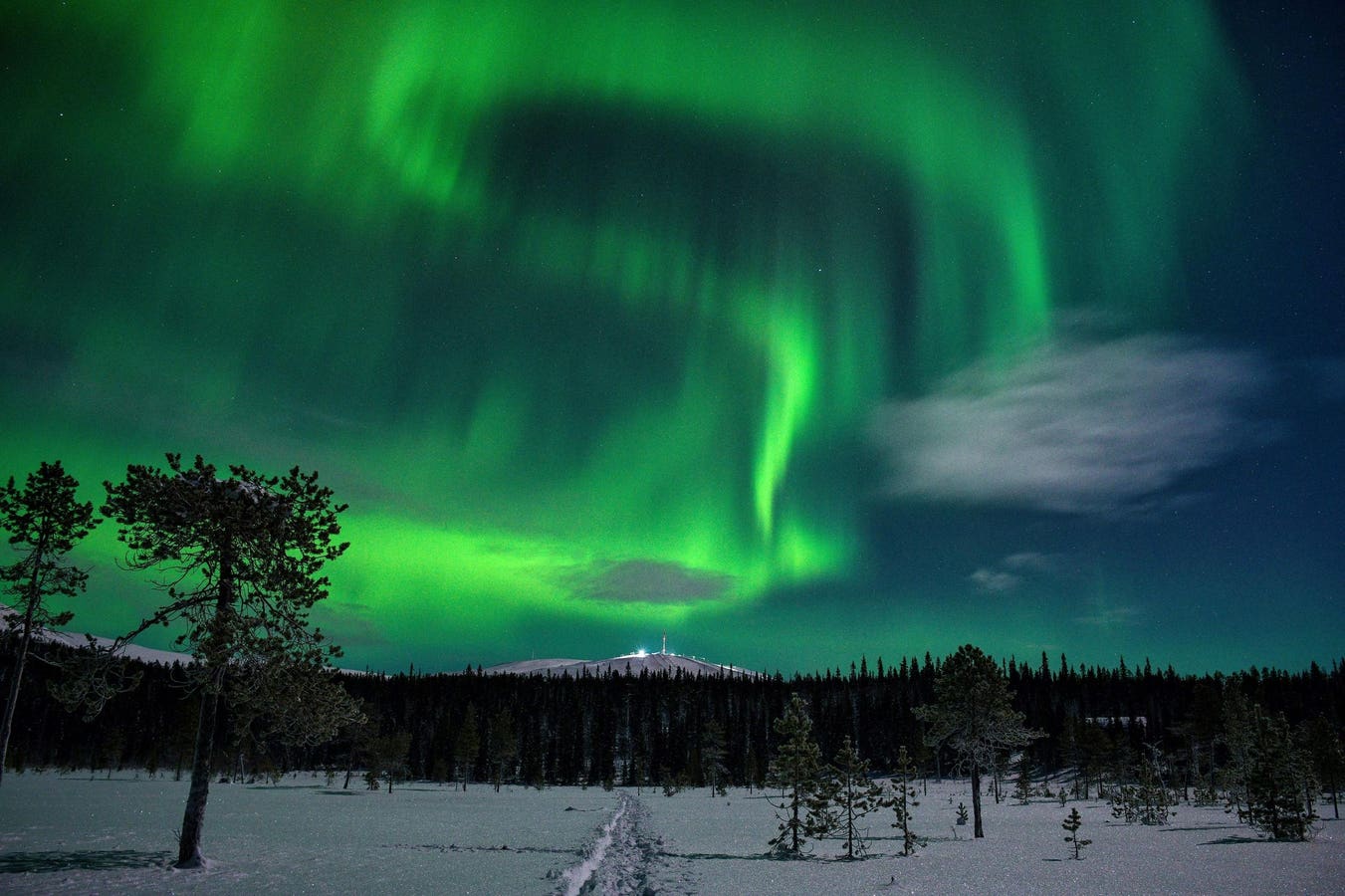Topline
A recent coronal mass ejection may bring the northern lights to some states along the Canadian border on Friday, and it’s possible more areas could see the phenomenon, according to the National Oceanic and Atmospheric Administration.
Forecasters said a recent coronal mass ejection and high-speed winds from a spot on the sun’s … More surface may disrupt Earth’s magnetic field.
Key Facts
The NOAA forecast a Kp index of three on a scale of nine for Friday night, suggesting the northern lights will move away from the poles and be “quite pleasing to look at” for people in the right areas.
Minor geomagnetic storm conditions are “likely” on Friday because of high-speed winds from a cooler, less dense spot on the sun’s surface and a “possible glancing blow” coronal mass ejection from May 5, NOAA said.
An upgraded forecast for increased auroral activity is also expected, according to NOAA’s three-day outlook, which suggests Friday’s Kp index could rise to nearly five, meaning parts of South Dakota, Maine and other states could have a chance to see the northern lights.
Get Forbes Breaking News Text Alerts: We’re launching text message alerts so you’ll always know the biggest stories shaping the day’s headlines. Text “Alerts” to (201) 335-0739 or sign up here.
Where Will The Northern Lights Be Visible?
Parts of northeastern Washington, northern Idaho, Montana, North Dakota, Minnesota, Wisconsin and Upper Michigan are above the view line and will likely have a lower chance of seeing the phenomenon. Alaska and most of Canada will have a higher likelihood. (See map below.)
What’s The Best Way To See The Northern Lights?
The northern lights peak between 10 p.m. and 2 a.m. and are best seen while at a north-facing, high vantage point away from light pollution, according to NOAA.
What’s The Best Way To Photograph The Northern Lights?
With a regular camera, a wide-angle lens, an aperture or F-stop of four or less and a focus set to the furthest possible setting are recommended for capturing the northern lights, photography experts told National Geographic. A smartphone with night mode enabled and flash turned off is also suggested, NOAA said.
Key Background
The strongest geomagnetic storm in the last two decades disrupted Earth’s magnetic field in May 2024, bringing the northern lights to Texas and Florida, according to NASA. This preceded activity on the sun’s surface achieving a “solar maximum,” or a peak in the sun’s 11-year cycle that features a rise in solar events like coronal mass ejections and solar flares. A peak will likely persist into early 2026, scientists from NOAA and NASA said, suggesting the northern lights will continue being more visible to more people. The colorful, swirling displays of the aurora borealis are created from these events, as electrons interact with oxygen and nitrogen in Earth’s atmosphere before becoming “excited.”










